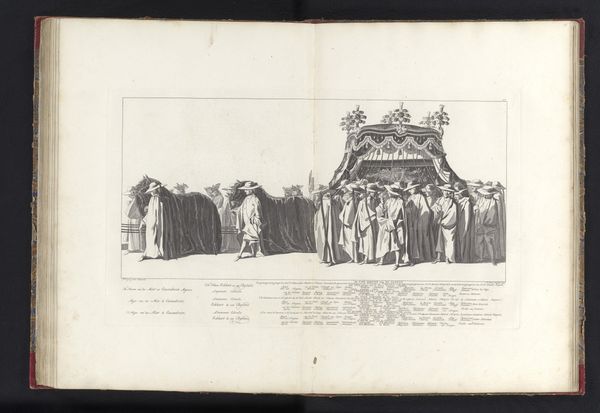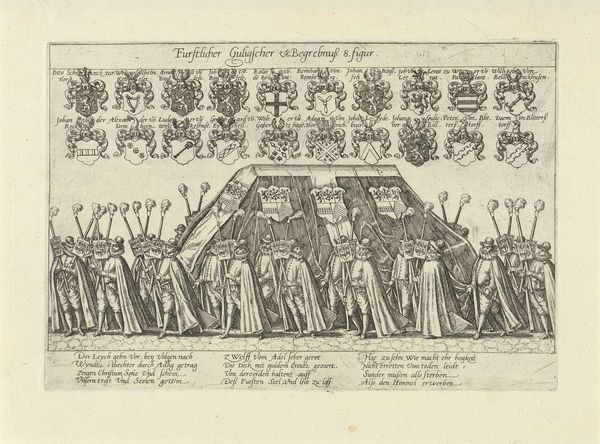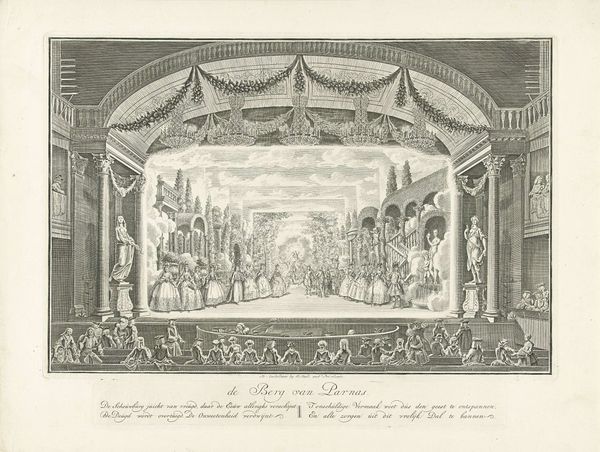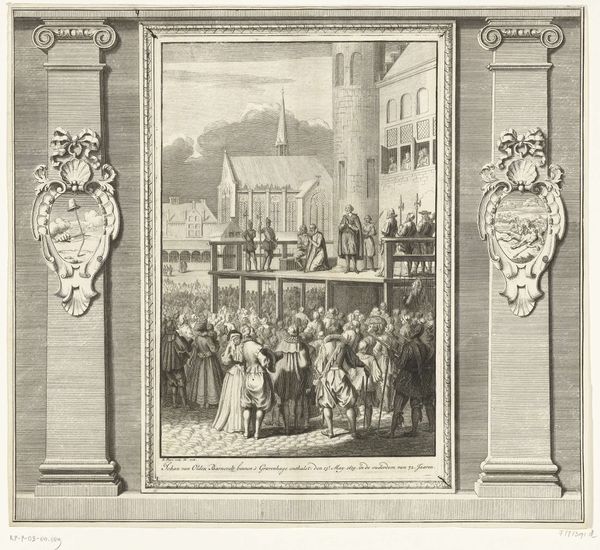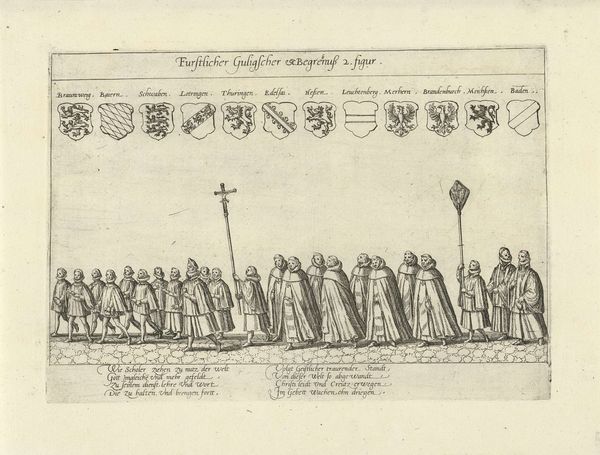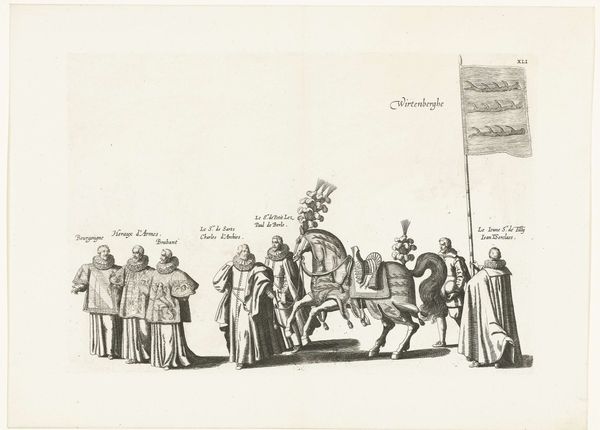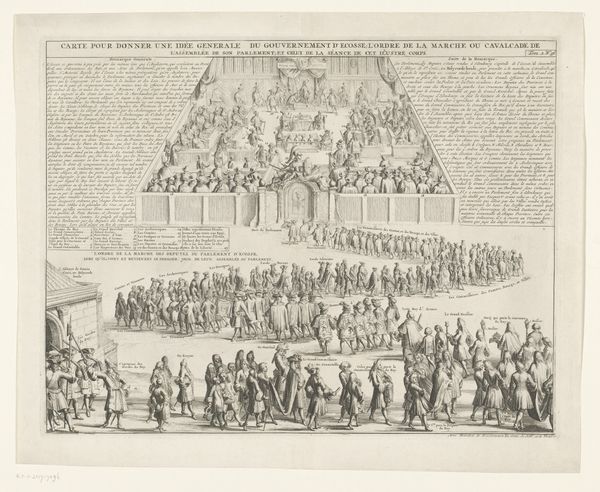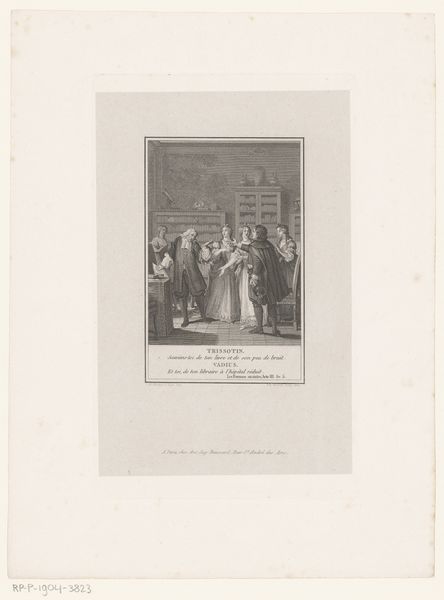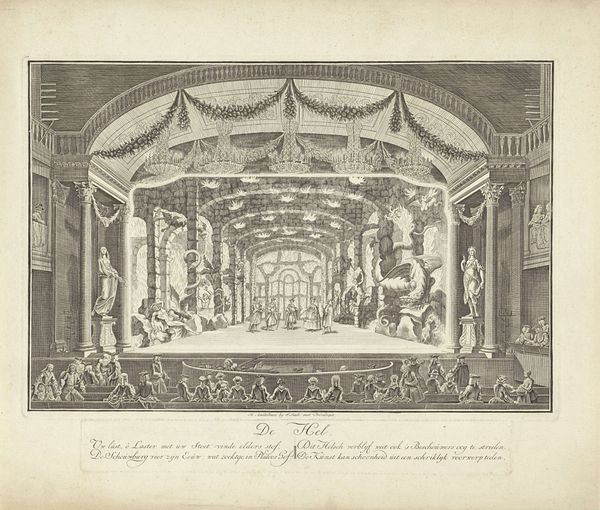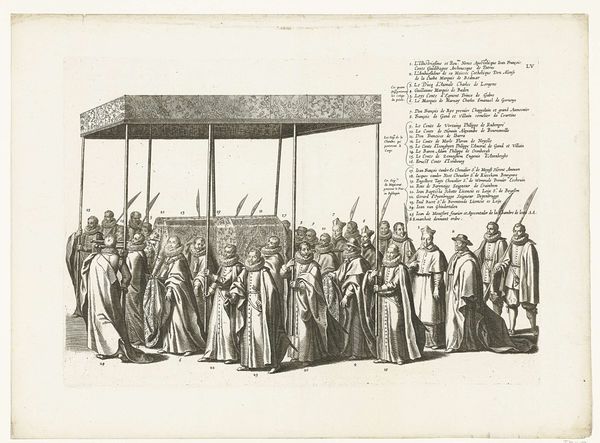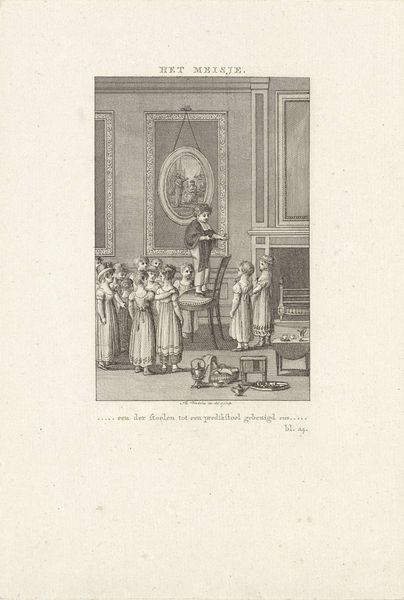
Dimensions: height 290 mm, width 395 mm
Copyright: Rijks Museum: Open Domain
Curator: What strikes me first is the overwhelming somberness. This monochrome image, nearly devoid of shadow play, conveys a powerful sense of gravity. Editor: Indeed. We’re looking at "Lijkwagen in de begrafenisstoet van prinses Maria Louise," which translates to "Funeral Carriage in the Funeral Procession of Princess Maria Louise," created in 1765 by Rienk Jelgerhuis. It’s an engraving, capturing a specific historical event and its socio-political context. What do you make of the overwhelming sense of weight? Curator: Beyond the literal weight of the carriage, there's a palpable social weight. Everyone in this print – from the horses draped in mourning cloth to the procession of cloaked figures – participates in a highly structured performance of grief. It really says a lot about class and constructed mourning rituals. What statement does the artist seem to be making here? Editor: Well, I would be cautious about attributing clear “statements.” But Jelgerhuis does depict power. He captures not just the spectacle of the funeral, but the way death reinforced existing hierarchies. Notice how the figures bearing the canopy, likely dignitaries, are subtly distinguished from those pulling the carriage, underscoring their elevated status even in bereavement. What’s most interesting is how accessible events such as these, despite the fact that their original audience would have been limited in numbers due to practical restraints, were spread more widely to a reading public through engravings. Curator: That’s insightful. I agree. It reminds us that grief itself can become a marker of social standing and perhaps of propaganda. The very act of creating and circulating this image could be viewed through the lens of power dynamics – whose grief matters and whose story gets told. Editor: Precisely. Jelgerhuis' work offers a valuable glimpse into the public performance of mourning in the 18th century, highlighting the ways in which death and bereavement were entangled with power, class, and social status. This image isn't simply a historical record, but a testament to art's capacity to engage in crucial socio-political conversations that extend across eras and impact on contemporary society. Curator: Absolutely. By examining the symbolism embedded within this artwork, we begin to unravel a complex web of cultural attitudes towards death, power, and gender roles in the 1700s.
Comments
No comments
Be the first to comment and join the conversation on the ultimate creative platform.
